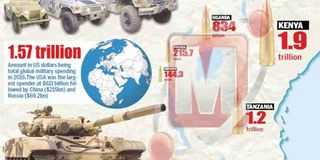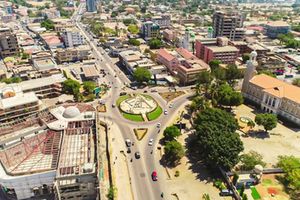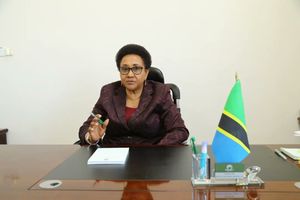Dar maintains place in military spending

What you need to know:
The country raised its military spending by 3.66 per cent to Sh1.207 trillion last year, up from Sh1.164 trillion during the 2015 calendar year, the Stockholm International Peace Research Institute (SIPRI) said in a report.
Dar es Salaam. Tanzania maintained its position as the second largest military spender in East Africa last year as the global expenditure rose for a second consecutive year, a study said yesterday.
The country raised its military spending by 3.66 per cent to Sh1.207 trillion last year, up from Sh1.164 trillion during the 2015 calendar year, the Stockholm International Peace Research Institute (SIPRI) said in a report.
The SIPRI report did not give details of how various countries spend their military budgets.
However, going by the SIPRI report, Kenya was the highest military spender in East Africa last year. The neighbouring country – which is part of the African Union (AU) mission in Somalia where it is fighting al-Shabaab militants – raised its military budget by about five per cent last year.It spent Ksh96.994 billion (about Sh1.94 trillion) from Ksh92.379 billion (about Sh1.85 trillion) in 2015.
Uganda – which raised its military spending budget by about two per cent - was the third military spender in East Africa last year.
It injected a total of Ush1.391 trillion (about Sh834.6 billion) in military last year, raising from Ush1.4 trillion (about Sh818.8 billion) in 2015.
Rwanda spent 80.338 billion Rwandan Francs (about Sh215.7 billion) on military issues last year whereas Burundi spent 109.85 billion Burundian Francs (about Sh144.3 billion).
Requesting the Parliament to endorse a total of Sh1.7 trillion for both recurrent and development expenditure for the financial year 2016/17 in June last year, the Minister for Defence and National Service, Dr Hussein Mwinyi, said Tanzania’s borders were secure.
He, however, said that conflicts and indicators for upheavals in some of the neighbouring have resulted into an increase in the number of refugees in Tanzania, including those that come with guns which they use in some illegal activities.
Globally, a total of $1.67 trillion was spent on their militaries in 2016, a slightly increase from the 2015 level.
The United States of America (USA), China, Russia, Saudi Arabia and India were the top five spenders in that order.
Despite low oil prices and economic sanctions, Russia’s military spending was $69.2 billion in 2016, a 5.9 per cent rise over 2015, the SIPRI says, adding that that was the highest proportion of country’s gross domestic product (GDP) since it became an independent state.
“This increased spending and heavy burden on the economy comes at a time when the Russian economy is in serious trouble due to low oil and gas prices and the economic sanctions imposed since 2014,” (by the West over the Ukraine conflict), SIPRI said.
Saudi Arabia was the third largest spender in 2015 but dropped to fourth place in 2016 as its expenditure fell by 30 per cent to $63.7 billion, “despite its continued involvement in regional wars”, it added.
“Falling oil revenue and associated economic problems attached to the oil-price shock has forced many oil-exporting countries to reduce military spending,” SIPRI researcher Nan Tian said, adding Saudi Arabia had the largest drop in spending between 2015 and 2016.
The US remained the top spender as its expenditure grew by 1.7 percent between 2015 and 2016 to $611 billion while China boosted its expenditure by 5.4 percent to $215 billion, a lower rate than in previous years.
SIPRI said the rise in US military spending in 2016 “may signal the end of a trend of decreases in spending” caused by the 2008 economic crisis and the withdrawal of US troops from Afghanistan and Iraq.
On April 13 the US dropped its largest ever non-nuclear bomb, hitting Islamic State group positions in a remote area of eastern Nangarhar province in Afghanistan.
“Future spending patterns remain uncertain due to the changing political situation in the USA,” Aude Fleurant, Director of the SIPRI Arms and Military Expenditure (AMEX) programme, said in a statement.
Hit by a series of terror attacks since 2015, Western Europe raised its military expenditure for the second consecutive year, up by 2.6 percent in 2016.
Overall military spending in Central Europe jumped by 2.4 percent in 2016.
“The growth in spending by many countries in Central Europe can be partly attributed to the perception of Russia posing a greater threat,” said senior SIPRI researcher Siemon Wezeman in the statement.
“This is despite the fact that Russia’s spending in 2016 was only 27 per cent of the combined total of European Nato members,” he added.




